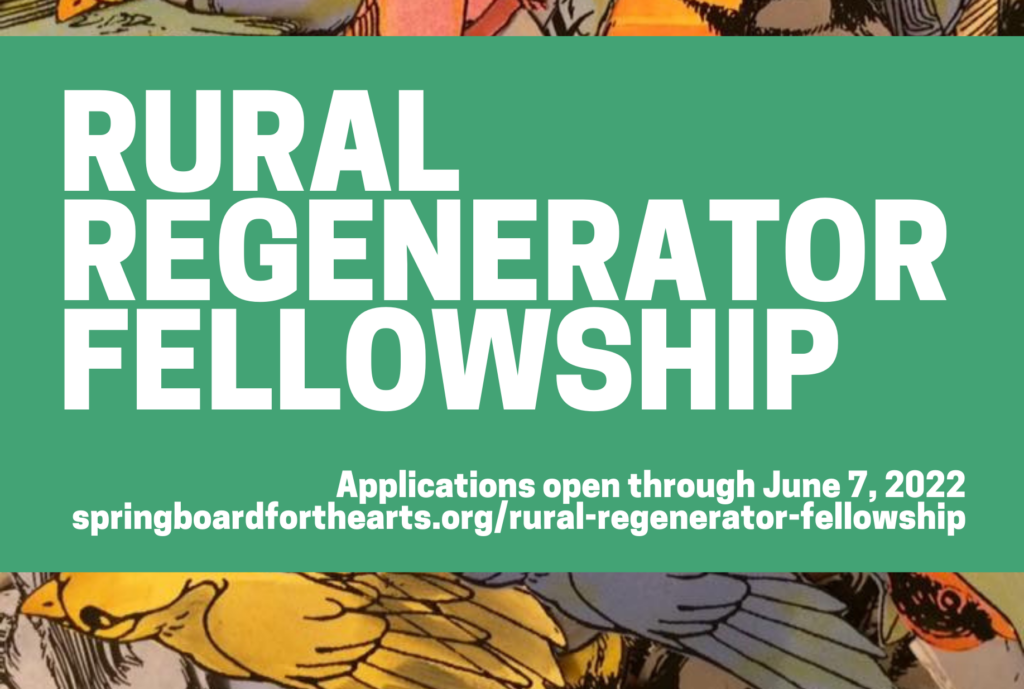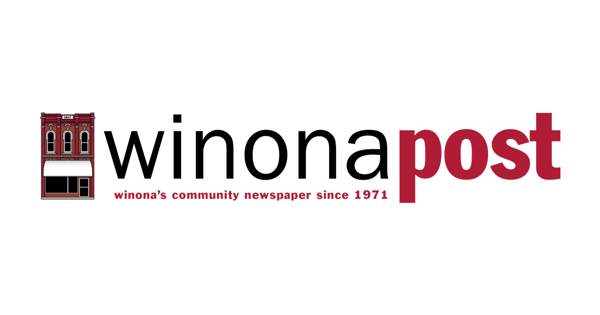Mai’a Williams’ Sister Projects Connect Place & Identity
The Rural Regenerator Fellowship brings together individual artists, makers, and culture bearers, grassroots organizers, community development workers, public sector workers and other rural change-makers who are committed to advancing the role of art, culture and creativity in rural development and community building. In 2022, we asked a collective of local writers to sit down with current Rural Regenerator cohort members to share more about their work.
If you were a river, where would you be going?
What do birds say to you?
What does the color green feel like in your body?
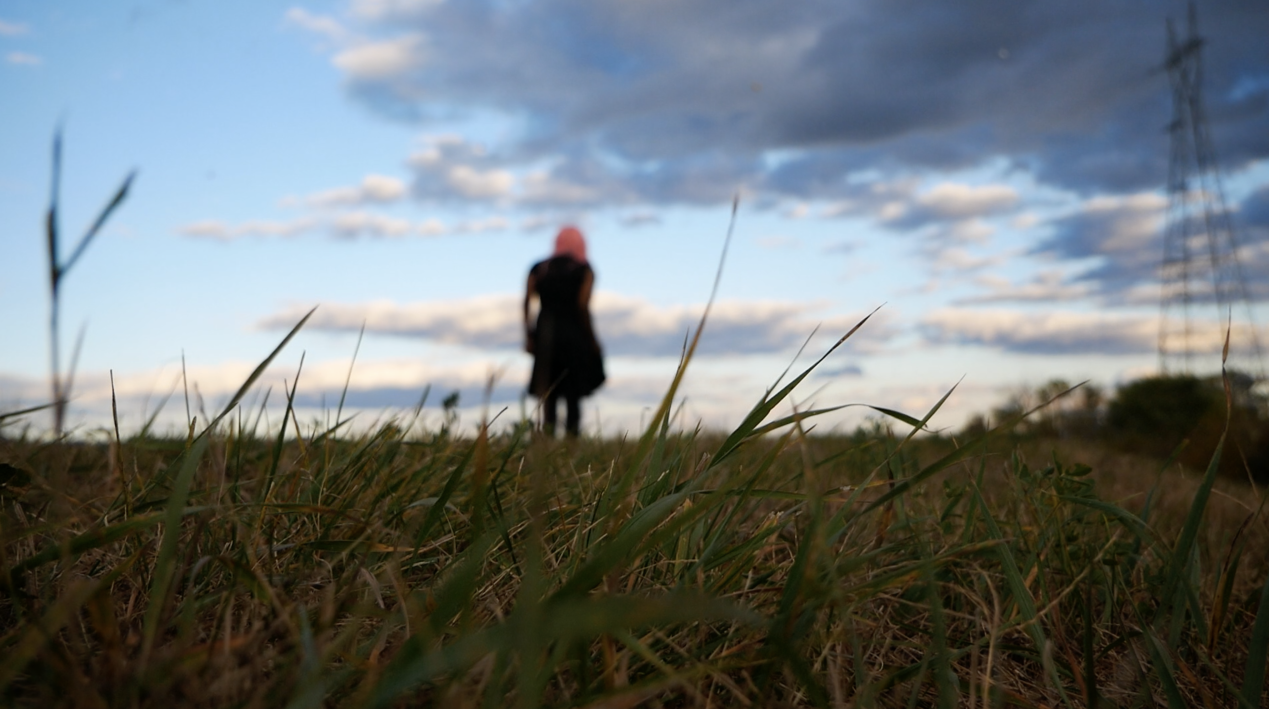
Film Still Videography from Stuff Studio
Something inside me broke open as I scrolled Mai’a Williams’ (they/them/their) prompts that make up part of the interdisciplinary project In the Ruins of Paradise. Out of the prompts Williams gathered collective poems from responses to the work so that the current reader visiting the site must sit with the questions, viewers’ responses to them, and Williams’ organization and curation of these words into poems.
The question, “What were/are your grandmother’s favorite flowers?” is a simple request to ponder. And yet, a wave of grief flowed through me when I realized that I didn’t know the answer, followed by a flicker of hope that thankfully, I could still find out.
The Tumblr site exists partly to archive the multimedia installation Williams created and presented in November 2021, partly also to expand its reach especially given the limitations related to large gatherings during the pandemic. They describe the project as a mediation, “on Blackness and Indigeneity and our relationship to the landscape, healing traditions, climate change.” The components of the digital offering vary from collected poems, a suggested playlist, and excerpts from their self-published book The Future of Love which Williams worked on with the support of the Minnesota State Arts Board, and from Springboard for the Arts’ Artists Respond: Equitable Rural Futures project.
This funding allowed Williams to pass out more than 250 copies of the text for free, planting The Future of Love in coffeeshops, bars, little free libraries, anywhere a pamphlet could be left in Winona. This practice, of making their work available for free, is something they would love to do more of with future grant support. It is clear from this digital offering that they are invested in providing a rich sensory experience. Their work demands multiple points of engagement, that sensory experience is what guides Williams’ creative process, drawing us all in with its wake.
I find it particularly wonderful when an artist’s thoughts on their work are reflected clearly in the work itself. In other words, when the content and form work together for broader purposes. This is the case for Williams’ artistic production, which is filled with curiosity, deep intellectual integrity, comes from an embodied place, and is grounded by joyous promise even as their work addresses complex social menaces like imperialism, white supremacy, and settler colonialism. Much of their artistic work emerges from writing, a practice that Williams engages daily, and then revisits pulling out ideas to weave into other forms.
What is also unique about Williams’ offerings of words, is that unlike the typical way one might encounter writing in the form of a book where the communication is one way, author to reader, Williams words inform books, blogs, poetry, prose, performance, film, photography, and more and feedback from the viewer/listener/reader is important. When asked about their creative process Williams shares: “I like work that’s really immersive, and I like work that touches as many senses as possible. Or touches as many parts of the brain as possible. I don’t know, it might be the neurodiversity, but I need to stay interested in it, and involved in it so I like to create that for others.” Whether reading collected poems in front of a video of the artist smiling as they kneel on the earth with a stick in their hand, asking a local puppeteer to play with them for an hour-long performance, or encountering their work at the local cafe, the art functions through multiple layers, and thrives on its relation to viewers, to community.
Williams’ creation cycles span two main Minnesota geographies from Winona, their current home base in a little green house by the train tracks, to Minneapolis where they share knowledge providing medic training in support of social justice rebellions, and where they volunteer with the reproductive justice collective SPIRAL. These community commitments, and investments in what they deem “revolutionary mothering” fuel Williams’ deep questions about the places they inhabit and the community in which they engage. Among other questions guiding their practice Williams wants to use this time as a Rural Regenerator Fellow to “understand what does it mean to live in rurality – what does it really mean to live here?”
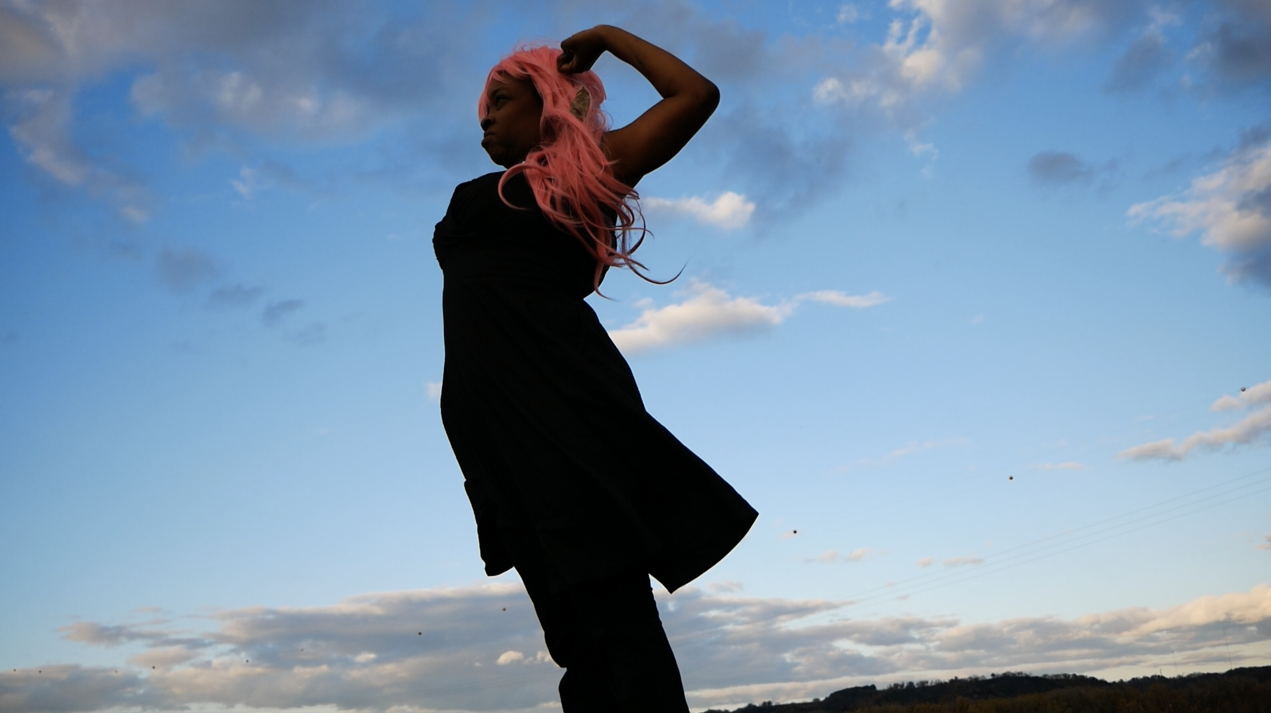
Film Still Videography from Stuff Studio
These questions have been further magnified in the wake of the murder of George Floyd in Minneapolis and in how Minnesota has served as an epicenter of racial justice rebellions in our COVID-19 era. Williams notes it’s been an “interesting dance to be who I am in a town like this.” Like many socially conscious BIPOC folks living in rural places, Williams strives to bring their authentic self to a community of 27,000 people on the upper Mississippi River. Their work provides a critical counter-narrative for a place whose name comes from Lakota, meaning “first daughter.” They recognize the tightrope walk in how asking questions challenges White norms and conventions in their community. Though this is necessary work, especially where the ninety-four percent white town share a false understanding of their origin story built on wishful thinking that elides the more accurate history of violent, white-settler colonialism. It’s not only this violence that concerns them, but Williams wonders, how a place can be ready for the challenges we will all face in the climate change apocalypse heading our way when community is not connected to its indigenous roots?
This critical counter-narrative comes from a place of deep love of rural places. Williams’ artistic practice often draws on their family history as a descendent of Black and Native rural land tenders in the Carolinas. Since the end of Civil War, it is this family connection to land that particularly helps them prioritize and make sense of the importance of being in relationship to place. Williams also sees it as a site of inspiration. They want to keep asking, and inspire others to ask and answer, “where do I come from?” And “where do these ideas come from?” about notions of place, home, and connection wherever Williams finds themself.
While these questions begin as a personal exploration they soon fan out into Williams broader creative interests, as a lot of their work is research-based once they pose a critical question. The cycle goes something like this: question, dig deep into it and chase it through a rabbit hole, revisit, repeat, take long walks, sleep and then do it all over again. As a self-described insomniac, sleep becomes an important part of Williams’ artistic practice where once they are able to sleep, the process of digestion begins. Williams describes this as “letting go,” and that sleep allows for them to not be in control of what the brain does, giving that part of the body permission to make its own connections. “I want to go deep and wide at the same time, and I can’t do both consciously” they share, “if I walk and sleep, the brain will do it for me, and I just have to trust it.”
We are the beneficiaries of these subconscious connections flowing through Williams’ artistic creations and their willingness to buck white Minnesota Niceties and ask probing questions to follow their curiosity.
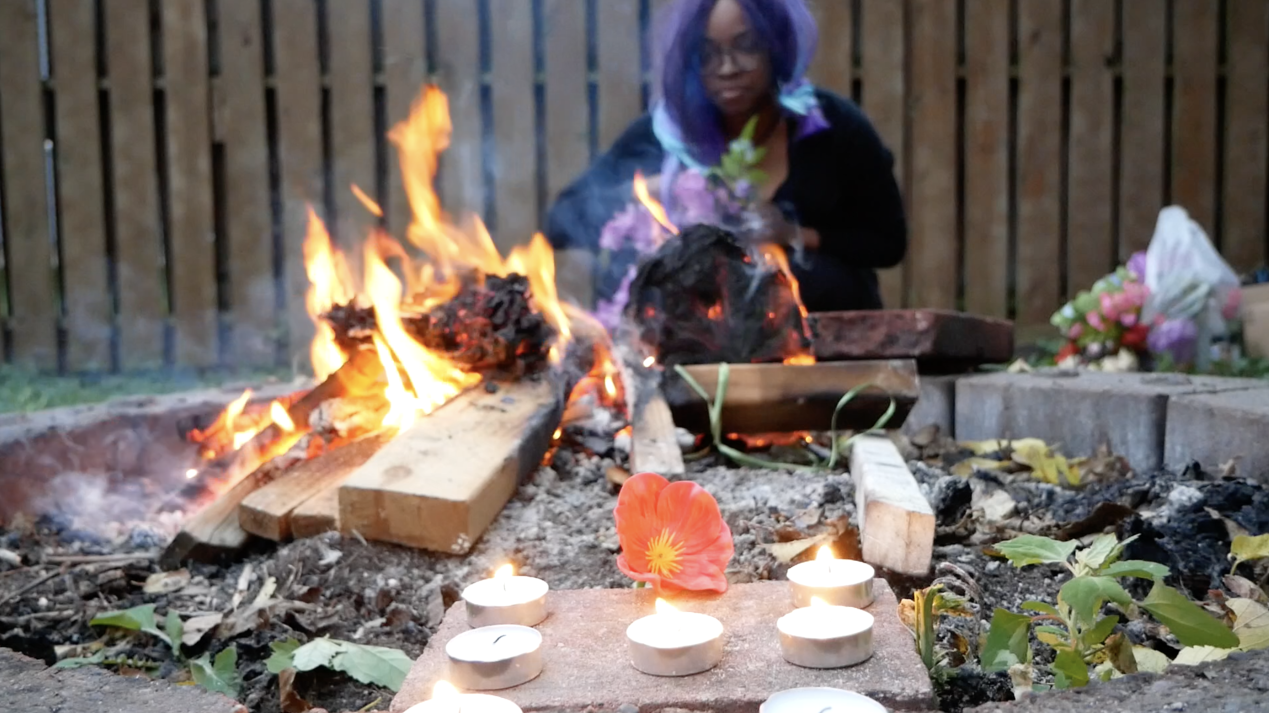 Film Still Videography from Stuff Studio
Film Still Videography from Stuff Studio
Williams refers to their recent and current projects as “sister projects,” because of the ways that the creative practice continues to build on the scaffolding of what they’ve produced and released to the world in writing, performance, or installation. Their self-published book The Future of Love embodied creative non-fiction where they took on the different perspectives of communities two hours apart (Winona and Minneapolis) on quarantines, COVID-19, political and social uprisings, and their experiences as a mom. This text informed the performance piece In the Ruins of Paradise produced and performed in Winona and digitally archived on the internet. Their newest works in progress include a book called Apocalypse Here which is writing bringing together insights from rural resistance movements that Williams has learned from or participated in some capacity. In essence, their work is about tying together the rural resistance movements of Chiapas, Mexico and Standing Rock, South Dakota, the US rural South to Egypt. Over the next year Williams will also be working on Blooming, a Southeastern Minnesota Arts Council-funded video installation project bringing together Black and Indigenous traditions and histories of the Americas, throughout their time as a Rural Regeneration Fellow.
Williams conceives of all these sister projects under a large umbrella they call Paradise Marronage, a conceptual organizing of their thoughts, drawing on the wisdoms of Maroon societies and what they can teach us about liberation through a lens of abolitionism and decolonization. Their best hope for the impact of their work is a healing of the brokenness they see in their community between people and their lack of relationship to land, to their histories. How do you survive in a rural land when you have no spiritual connections to it?
And so in the spirit of the reach of Williams’ work, and their calls for participation in the work, I answer the prompt. My grandma’s favorite flowers are roses, mums, and daisies. Next time I call her, I’ll find out why.
Mai’a Williams is an interdisciplinary artist who primarily works in sculpture, performance, installation, poetry and prose. Their studio, curatorial and research-based practice weaves together their identity as a queer Muslim and a daughter of First Nations and Black American lineages, as well as their experience as a midwife and a mother. Learn more at maiawilliams.net
Kandace Creel Falcón is an interdisciplinary feminist scholar, writer, and visual artist based in rural Erhard, MN. Drawn to inquiry and mixed-media methods of painting, fabric arts, and writing, their work is committed to sharing narratives for social transformation. www.kjcfalcon.com
